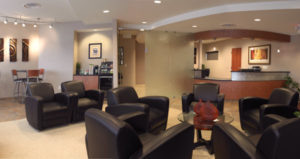
Building a new office is both exciting and overwhelming. Every doctor wants his or her practice to be perfect. Choosing a location and selecting equipment and the floor plan are just some of the decisions that have to be made. Henry Schein experts have helped thousands of doctors build and renovate successful offices, and four of them share recommendations for building and maintaining a new office.
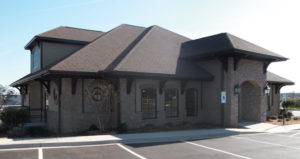
Stephen Raley is an Equipment & Technology Specialist in South Carolina, and during his 17-year career with Henry Schein, he has been involved in the build outs of 600–700 dental practices. Ryan Lingenfelter is an Equipment Sales Specialist in Nebraska and South Dakota, and he has worked for Henry Schein for more than eight years. Matt Scott is an Equipment Sales Specialist in the greater Los Angeles area and has been with Henry Schein for more than 10 years.
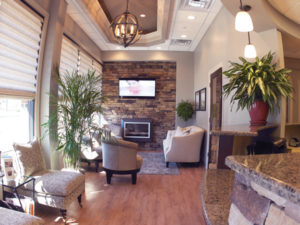
What are the most common reasons doctors build a new office or renovate their current office?
SR: In 99% of the cases, there is not enough room in the existing office. There’s no overflow, and if there’s an emergency, patients have to be moved around to accommodate it. It’s stressful and inefficient.
MS: In Los Angeles, the market is saturated and doctors look for ways to set themselves apart. When I visit existing offices, the staff is often crammed into a space that’s too small. The waiting room is filled. And there are inefficiencies in the office or it has equipment that’s more than 15 years old. I tell them they can build in the same amount of space but to change it to be more efficient. In a market as competitive as LA, many doctors build a second office a few miles from their first. They don’t have to go too far away to attract a whole new set of patients.
What is a common misconception about building a new office?
SR: One of the biggest worries doctors have is how they will pay for a new office. They think they will have to work more hours to afford it. I explain that although they may be very busy now, it’s because the office is inefficient or without the right equipment in the right positions. One of my doctors admitted, “I thought I would have to work harder, but in the new office, I’m working smarter, so it feels more relaxing.”
I conduct interviews with my customers, and I ask them to think about their wish list.
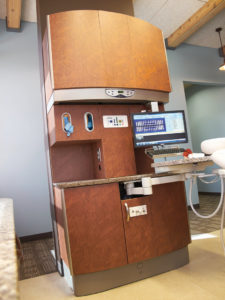
What should doctors do first when they are thinking of building a new office?
SR:For existing offices, we suggest a practice analysis first to determine if he or she should move their office. It gives us a 10,000-foot view. For example, I worked with a practice that had 22,000 active patients and was open 7 days a week. There was no space to expand, and yet, we learned the doctors had more patients than they could see. In the end, after weighing the data, they decided to keep the existing office and built a second location. So it’s a valuable tool.
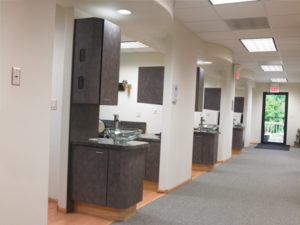
RL: I conduct interviews with my customers, and I ask them to think about their wish list. How many operatories do they want? How many are at the front desk? How do you want your waiting area or sterilization area to be situated? What equipment do you want? We get it all on paper—everything we can think of. Then I go with them as they look at sites and we measure the space, windows, and check the electrical setup. I want them to end up with an office that is as close to perfect as possible.
Talk about location and what a doctor should look for in a site.
SR: Well, most doctors think they need “retail dirt.” A high-traffic count is good and location is key, but you can be near a top location and market yourself strategically to leverage that. We run demographic reports looking at local zip codes to identify good locations. Doctors should know, however, that unless you are building in a rural area, there will be other practices nearby and they will need to market themselves.
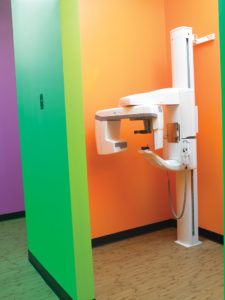
MS: In Los Angeles, finding space is difficult. But things they should consider are the demographics of the area and the building itself: if it’s an existing structure, signage, parking, restrooms, what direction the windows need to be facing, the shape of the space, and the structural things that have to be worked around. Frequently, I bring a contractor with me to a site meeting so he or she can identify issues. For instance, are there areas where we can’t install plumbing? I suggest the doctor choose their building team while still reviewing sites to avoid problems later.
RL: The earlier the building team is involved in the process, the fewer mistakes there are. The contractors and architect, if there is one, also need to be experienced in dental. For example, one of my customers showed me design plans that had been drawn up by an architect, and they called for operatories that were 15½ feet deep instead of 10½ x 12 feet deep, which is typical. The room was actually too large and not ergonomical. If the room is not designed correctly, it can affect the doctor and the staff’s long-term health. The majority of my doctors utilize Henry Schein’s National Design Group for this reason.
How should a doctor put together an effective team when building an office?
RL: Well, first you need to choose a trusted point person. When you work with Henry Schein, our first and only interest is what’s in the best interest of our doctors. I recommend starting there. The team is always the doctor’s decision, but I do share names of preferred contractors who have built other dental offices and I know will take care of them. On a recent project, the doctor and I met with four different architects and multiple contractors and engineers.
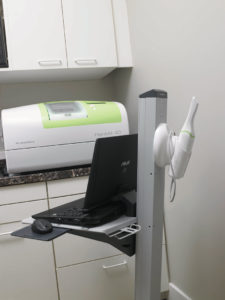
How does the design process work?
MS: The doctors usually come to us and they may already have a plan in mind. So, I ask questions: What do you like in your current environment and what don’t you like? The National Design Group is a huge resource for us. We literally can’t do what we do without them. I always recommend that we involve them, even if the doctor already has a plan, because they design 10–15 offices each week and they do them extremely well.
Another thing I do is show doctors a variety of floor plans without pictures. They have the same consistent fundamentals of flow and function. Then, I show them photos of those same offices so they see that even when the fundamentals are the same, the offices don’t look the same. They are all unique and personalized to the doctor’s style.
CAD/CAM systems and cone-beam imaging are huge for my customers.
RL: The first step is getting everything on paper in a preliminary plan. We talk about where equipment should go, what equipment is coming from the existing office, and what will be new. When we have the full plans drafted, we begin to interview contractors and then hold a preconstruction meeting before the project begins. I’m very involved; I feel it’s my responsibility to have my eyes on the project.
How does the design of a practice contribute to its success?
MS: In California, design is very important to the business of dentistry for several reasons. One, it has to be ADA-compliant in all aspects, which can be a challenge in the space given. Plus, because the market is extremely competitive, the look and perception of the office is a way—in addition to technology—to set it apart. The design needs to add to the patient experience.
I encourage open sterilization areas that can be viewed by patients and the open display of other pieces of equipment.
RL: The office design needs to speak to the doctor’s vision and level of service. It’s a key way to tell the doctor’s marketing story.
SR: When you are working in an environment that’s not ideal, you can’t work to your full potential. You can be very busy, but you’re busy because you’re doing things inefficiently.
Is there a “recipe for success” you recommend to dental practices?
SR: I have a few things that are nearly non-negotiable for me when making equipment and technology recommendations. I h3ly recommend Dentrix practice-management software as well as a digital pan for any dental office, but especially for specialty practices.
MS: My “recipe for success” is that doctors find the best products, regardless of brand, that will be reliable and fit their business. We have so many options at so many price points that we can be creative in meeting expectations. That being said, doctors have to be digital. CAD/CAM systems and cone-beam imaging are huge for my customers. Many general-dentistry practices are buying cone beams because they believe in the Henry Schein philosophy of keeping as many services as they can in-house. It also allows them to expand services, such as adding sleep studies, airway management, and TMJ treatment. Patients like that their dentist can do everything.
RL: I’m a believer that patients need to see the technology they have invested in so they know what’s going into their care. I encourage open sterilization areas that can be viewed by patients and the open display of other pieces of equipment.

Do you have advice for doctors who are thinking about building, expanding, or renovating their practice?
MS: Let your team help you set your budget goals instead of setting an arbitrary number. Some doctors set a budget and then settle for equipment that’s not their first or best choice. You should select what you really want, even if you can’t equip your entire practice right away. Add to the practice in phases in order to get the quality and the technology you want. Equipment lasts a long time!
SR: I encourage doctors to keep $75,000 in working capital—that’s non-negotiable for me. Take that out of the construction budget. Another thing I’ve learned is to plan for future growth, even if you’re certain you won’t need it. We built a beautiful office for one of my dentists, and as soon as he moved into it, he added an associate, even though he was adamant that he never would. He immediately needed more square footage and treatment areas. Now I plan for it, just in case.
RL:I would tell doctors that they don’t realize how successful they can be. When you are unsure, it’s difficult to see the vision, but you can do it, and it’s worth it.
Maintaining Technology and Equipment Best Practices
Henry Schein’s Tom Guarino spends his days in busy New York City, visiting 8–11 dental offices as an Equipment Service Technician. His job is to keep dental offices up and running, conducting routine maintenance calls, and responding to repair needs. After more than 30 years in the dental industry, he can fix anything, and he loves his work because it is different every day, and his customers have become like family to him.
“The three most important pieces of equipment that every office needs to maintain are the compressor, the vacuum, and the sterilizers,” said Guarino. “If an office maintains those three things regularly, they will never have a down day.”
Maintenance is relatively simple on those three key pieces of equipment; consistency is what’s important.
“Check the oil level on the compressor regularly,” he recommends. “The compressor runs everything, so a practice can’t work without it.”

To keep the vacuum working properly, Guarino advises practices to change the filter once a week and empty the collection canister every month. For the sterilizers, his advice is simple: keep everything clean. He recognizes the biggest challenge in terms of equipment maintenance and repair is in high-volume offices with a large number of associates and staff, especially if new staff members are not familiar with how to maintain the equipment. He offers training to those who are responsible for the office’s repair and maintenance and he recommends every office maintain a logbook to write down dates when maintenance was done and by whom.
A lot of preventive maintenance is just small things the office can do themselves,” Guarino adds.
